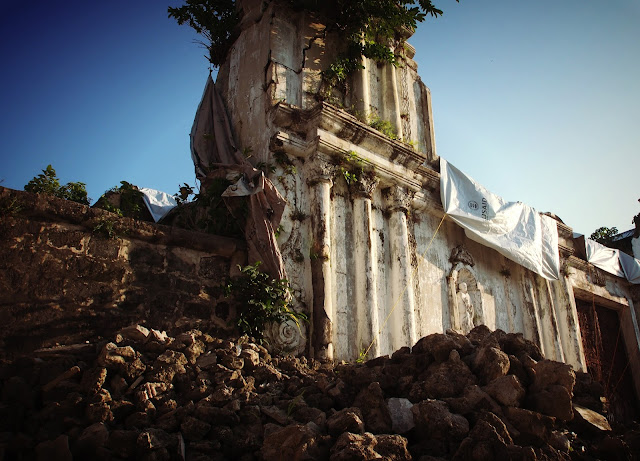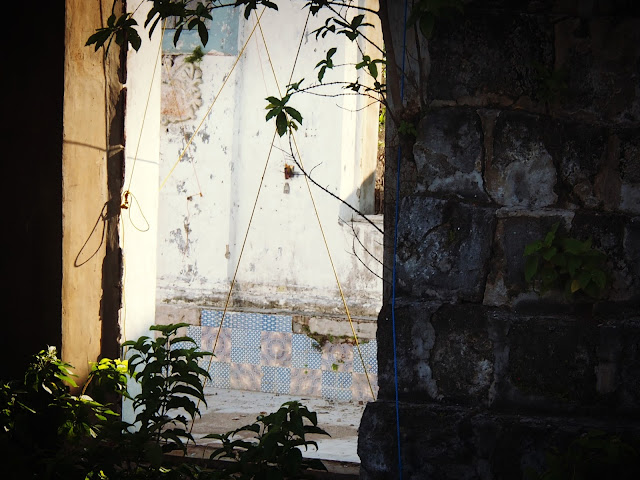Pancakes --- them tasteless fluffy pieces of fried batter seasoned with butter and syrup --- tided me during my tectonic shift to semi-vegetarianism as I desperately scrambled for options from the traditional Filipino breakfast meat of oily tocino, tapa, daing, fried eggs, and sinangag.
I rode my bike many times for pancake breakfasts in San Jose City's McDonald's or Jollibee at the Science City of Munoz, but really more for burning gastronomic excesses that gave me a 36-inch waistline than eating those miserable pieces of junk pretending to be food.
I was never a pancake lover, but I did liked those chewy thin pancakes dabbed with margarine and sugar that were once cooked and sold at the entrance of the Mapandan public market, that lunch of ice cream-topped Dutch pancake and beer in Amsterdam, and a really to-die for crumby version from the breakfast buffet of the Collector's Lord Nelson Hotel in Stockholm.
Somehow, it gets into the system as a consequence of habit and I got used to pancakes but not when served for the morning snack after having it for breakfast, which is evil of the highest form!
Pancakes were not fortunately on the menu at Max's Restaurant so I had a halo-halo breakfast for a change before obliging Gene and Ping for a photo in the secured grounds of the Malacanang Palace, finally. Nor is pancake served in PRRM where those who are lost and adrift pondered on the way forward as the pansit malabon for snack cooled in the presidential table.
Pancake was the first dish Bulan, and then Balong, learned to cook. Biking seems to be the only sport Bulan enjoyed, and perhaps Balong too. And I will be missing Bulan who will be gone to college soon, and will be teaching Balong to ride the bike Bulan will be leaving behind.
I was almost tempted to have pancakes the day AGT changed tires in Guimba but decided I still have much to burn from PRRM's anniversary fete, and then in San Jose City the next day but opted instead to try the new lugawan stand in Munoz.
I say God bless all the bikers in the world, and thank the pancakes too for the relief from the processed meat that has defined Filipino breakfast!
I rode my bike many times for pancake breakfasts in San Jose City's McDonald's or Jollibee at the Science City of Munoz, but really more for burning gastronomic excesses that gave me a 36-inch waistline than eating those miserable pieces of junk pretending to be food.
I was never a pancake lover, but I did liked those chewy thin pancakes dabbed with margarine and sugar that were once cooked and sold at the entrance of the Mapandan public market, that lunch of ice cream-topped Dutch pancake and beer in Amsterdam, and a really to-die for crumby version from the breakfast buffet of the Collector's Lord Nelson Hotel in Stockholm.
Somehow, it gets into the system as a consequence of habit and I got used to pancakes but not when served for the morning snack after having it for breakfast, which is evil of the highest form!
Pancakes were not fortunately on the menu at Max's Restaurant so I had a halo-halo breakfast for a change before obliging Gene and Ping for a photo in the secured grounds of the Malacanang Palace, finally. Nor is pancake served in PRRM where those who are lost and adrift pondered on the way forward as the pansit malabon for snack cooled in the presidential table.
Pancake was the first dish Bulan, and then Balong, learned to cook. Biking seems to be the only sport Bulan enjoyed, and perhaps Balong too. And I will be missing Bulan who will be gone to college soon, and will be teaching Balong to ride the bike Bulan will be leaving behind.
I was almost tempted to have pancakes the day AGT changed tires in Guimba but decided I still have much to burn from PRRM's anniversary fete, and then in San Jose City the next day but opted instead to try the new lugawan stand in Munoz.
I say God bless all the bikers in the world, and thank the pancakes too for the relief from the processed meat that has defined Filipino breakfast!


















































